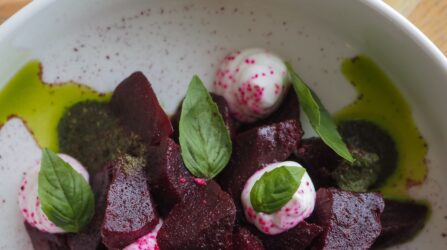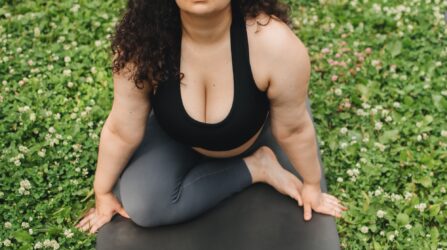
We’ve all heard of superfoods and how we should be eating kale and blueberries for lunch, but which foods are important to us as women? Here are ten foods to introduce to your diet (and some healthy snack suggestions) to give you an instant mood-lift, reduce grumpiness, help you to exercise and give a much-needed glow to your skin.
When we’re anxious we tend to reach for comfort foods, like carb-heavy or sweet snacks that aren’t great but give us a (short-lived) boost. Instead, have a tub of brazil nuts handy for the next time your worries threaten to overwhelm you. Brazil nuts contain high levels of selenium, which have been shown to lift your mood. A 1991 study published in Biological Psychiatry, showed that people who consumed the most selenium in their diets, had the highest elevation of mood and the lowest levels of anxiety.
As well as improving your mood, brazil nuts contain calcium so support bone health, help to metabolise fats in your body and can lower blood pressure.
It’s also worth noting that a separate study by the University of Calgary in Canada, showed that women who took selenium supplements whilst pregnant had a decreased risk of suffering from postpartum depression. Thankfully the current advice from the NHS is that unless you have a nut allergy, it’s safe to eat nuts whilst pregnant.
Brazil nuts are easy to have in a container with you for a mid-morning snack, but why not whizz yourself up a banana, brazil nut and date smoothie.
When you feel achy or a cold coming, instead of reaching for medication, try cooking up a storm with Bell Peppers. They come in vibrant red, green, yellow and orange but it’s actually the red bell pepper that gives you the most benefits because it’s been on the vine the longest. Low in calories, they are packed with 1.5 times your daily requirement of vitamin C (and contain even more if they are organic). They are also a great source of fiber and contain Vitamin B9 or folate, so are great for pregnant women especially in the first trimester. They’re also crammed with Vitamin E, Vitamin A, Vitamin B6 and potassium.
Read Your Vitamin Lowdown – what are the benefits to women, to find out about how vitamins help you.
Red bell peppers can be eaten raw or cooked, and because they’re sweeter than other peppers it’s easier to eat a whole pepper. Try slicing a pepper length ways and dipping it into hummus for an afternoon snack.
At the beginning of your period when you typically lose the most blood, you may need to up your intake of iron-rich foods to get the iron you’ve lost back into your body. Mussels are a great source of iron, but are also rich in Vitamin B12 (keeps your nerve and blood cells healthy), selenium (see above), Zinc (which helps our bodies process fat, carbs and protein) and folic acid which we need in the first trimester of pregnancy or whilst planning a pregnancy.
For more help with what to eat during your cycle, read our Selfish Darling guide What to eat during your cycle: get to know your period.
Mussels only take 3-4 minutes to cook, so add them to garlic, olive oil and a splash of white wine. Don’t forget to discard any mussels that don’t open. They taste amazing with chips!
Chia seeds are tiny black oval seeds, that may be small, but contain all the ingredients to lift your spirits. Their origins are from central America where they were apparently favoured by the ancient Aztecs. They are a rich source of Omega-3 acids and fiber but also contain iron, zinc, calcium and the all-important magnesium. Magnesium plays a role in balancing our hormones, regulating cortisol levels (cortisol is the stress hormone) by keeping us calm. It’s also important for getting a good night’s sleep; magnesium can improve sleep quality by reducing stress and aiding relaxation.
Since the magnesium found in chia seeds plays such a big part in destressing and helping us feel relaxed, sprinkle chia seeds on natural yoghurt with honey after your evening meal, before you wind down to bed. They also taste great on porridge or in smoothies as they have an almost caramel taste to them.
Our gut health can range from feeling bloated or having heartburn, to stomach aches and IBS, which is sadly more common amongst women. Either way, it’s highly likely we’ll experience some sort of digestive issue as we get older. Recent research has shown that ground almonds stimulate the growth of friendly bacteria in your gut, which helps to keep you healthy and builds natural defences. As well as helping your gut, almonds also nourish your skin with vitamin E, boost brain power, lower cholestral and contain magnesium and calcium. Despite being high in calories, latest research shows that those who snack on almonds, stay full for longer so they end up reducing their overall calorie intake during the day.
Stay away from flavoured almonds – sugary, salty or with added carbs and opt for raw almonds with their skins on. Fill a container with almonds that you can snack on at work or put them in a blender and chop them to add to smoothies, porridge or to make granola bars.
If you have an exam coming up, a driving test or just a big project at work that requires lots of concentration it’s time to up your fish intake. Fatty fish is rich in omega-3 fatty acids, which helps the brain function normally and efficiently and decreases inflammation. It also has an important role in maintaining heart health and helps your cardiovascular system. Research shows that people who eat baked or broiled fish at least once a week were less likely to have brain cells die off in the area of the brain linked to memory recall and concentration. Oily fish (rather than white fish like cod) such as salmon, mackerel, trout, pilchards and herring are all easy to buy and prepare.
Make a mackerel pate by whizzing up cooked mackerel with cream cheese, horseradish and a squeeze of lemon. It’s delicious on all that sourdough you learnt to make in lockdown.
If you’re staying in the UK for summer this year, there’s a good chance it won’t feel like the sun-drenched Balearics. Our bodies create 90% of the vitamin D it needs from the sun, to maintain our immune system and support our bone health. Problems occur when we don’t get enough direct sunlight, particularly between October and March when the sun is scarce. The Government recommends that we all take a vitamin D supplement during the winter months, but we can also boost this with foods high in vitamin D. Sardines get our vote, by being high in Vitamin D, but also remind us of sunnier days and fishing villages in southern Spain.
Try a sardine and tomato crostini, to replace a winter soup.
Our skin has to deal with too much sun, rain and wind exposure, over exfoliating, all sorts of make-up and lotions and just plain old forgetting to take our make-up off each night. But it’s the aging process that really consumes us as we spend a fortune on creams that promise to keep us young. Luckily something as simple as watercress – easy to get hold of and cheap to buy (and delicious), is a skin saviour. Packed with vitamins A and C, it stops the breakdown of collagen and elastin, reducing cellulite and wrinkles. In 2019, a review was published that stated watercress may even have protective benefits against cancer. Watercress has also been seen to lower blood pressure and because it contains Vitamin K, it can aid your bone health by improving how your body absorbs calcium.
It used to be seen a garnish; but has changed direction to become a superfood. Why not try using watercress in a pasta – blend it in a food processor with some garlic and a little olive oil to form a paste to add to anything. Here’s a recipe for Linguine with watercress and almond pesto
It’s pretty common for most women to experience problems with their skin at some point; acne, eczema, dry skin and blemishes to name a few. And we’ve all yearned to get that ‘glow’ back that seems to deplete with work stresses, growing families and getting older. Not the prettiest vegetable, the sweet potato contains a huge list of nutrients. Once digested, its high levels of beto-carotene convert into an active form of Vitamin A (retinol) – a product found in many expensive skin wonder creams. It also contains anti-ageing properties Anthocyanins and vitamin C, both antioxidants. It also contains potassium which studies show, help to keep your skin moisturised.
Bake sweet potatoes as you would a jacket potato and top with tuna, chilli or watercress (see above).
Beetroots are full of nitrate, which once digested, turn into nitric oxide in your body. Sounds scary but it’s actually great news – nitrate oxide helps open up blood vessels getting more blood flow and oxygen to your muscles. It also helps muscle fatigue (so great post-run or cycle), reduces inflammation and is said to help with endurance and stamina so athletes can train for longer. There are loads of ways to cook beetroots, but a word of warning – after eating/drinking they make your wee bright pink!
Whizz up cooked beetroot with apples and ginger for the perfect pre or post exercise smoothie.

-


Dr Singh is the Medical Director of the Indiana Sleep Center. His research and clinical practice focuses on the myriad of sleep.

Understanding the female libido Before we can answer, “Does progesterone increase sex drive?” it’s important to gain a better understanding of what a “sex drive” means. The female libido or sex drive is how much you desire sexual activity. Every

Why am I so hungry before my period? Women who experience an increased appetite before period starts can feel frustrated that they’re craving foods they don’t normally eat. You may be wondering, “Why do I eat so much before my

Understanding cycle syncing workouts Did you know that evidence shows a link between the impact of exercise and menstrual cycle phases in women? It’s true. Women are at a higher risk of foot and ankle injury during workouts than men,
Hormona© 2025, All Rights Reserved
| Cookie | Duration | Description |
|---|---|---|
| cookielawinfo-checkbox-analytics | 11 months | This cookie is set by GDPR Cookie Consent plugin. The cookie is used to store the user consent for the cookies in the category "Analytics". |
| cookielawinfo-checkbox-functional | 11 months | The cookie is set by GDPR cookie consent to record the user consent for the cookies in the category "Functional". |
| cookielawinfo-checkbox-necessary | 11 months | This cookie is set by GDPR Cookie Consent plugin. The cookies is used to store the user consent for the cookies in the category "Necessary". |
| cookielawinfo-checkbox-others | 11 months | This cookie is set by GDPR Cookie Consent plugin. The cookie is used to store the user consent for the cookies in the category "Other. |
| cookielawinfo-checkbox-performance | 11 months | This cookie is set by GDPR Cookie Consent plugin. The cookie is used to store the user consent for the cookies in the category "Performance". |
| viewed_cookie_policy | 11 months | The cookie is set by the GDPR Cookie Consent plugin and is used to store whether or not user has consented to the use of cookies. It does not store any personal data. |
